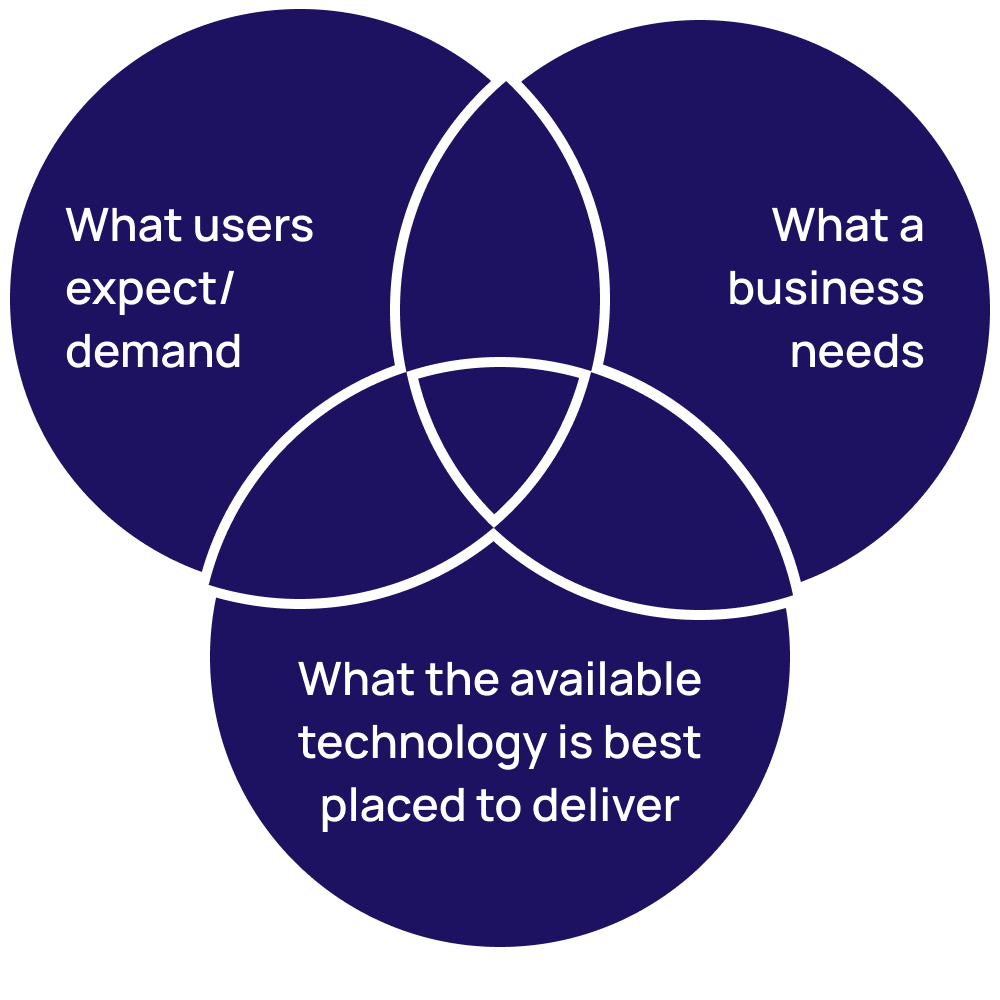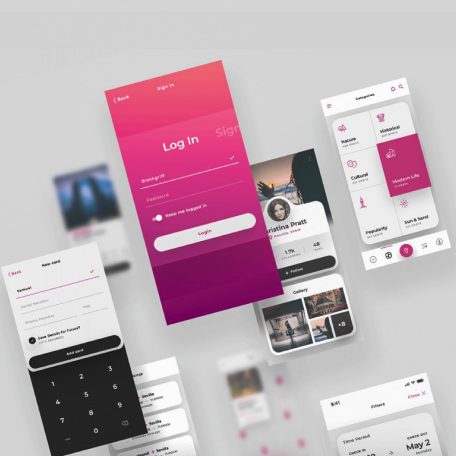Most digital products fail.
Since we were founded over 8 years ago, despite working on large, complex projects, we’ve never had a project fail.
We believe there are many reasons for this, however, it always helps to start with a clear picture of where great digital products come from:
- What a business needs
- What users expect/demand
- What the available technology is best placed to deliver
What a business needs
Your organisation has a specific value proposition, it has a number of fundamental drivers to this value proposition and it has an existing set of problems and opportunities.
Any new product must be directly related to these to give it a high probability of success.
If it is not, what you probably have is a side project that likely won’t provide true value to the market.
If it is, you are amplifying the key drivers that are already proven to work for your organisation.

What users expect/demand
Your organisation exists to provide value to users. They have expectations. If you can’t provide what they need or expect from their interactions with you, it is only a matter of time before they go elsewhere.
Any new product needs to fully take this into account.
Any product that does not deliver what your users expect from an offering such as yours, will disappoint and likely fail.
What the available technology is best placed to deliver?
Given what you need as a business and what users expect and demand, what options in the technological landscape are best placed to deliver this?
It might make sense to go with a new cutting edge technology, or perhaps this specific product is much better suited to a safer, better tested and more robust older solution.
How to apply the concept
Throughout the product development process, it is useful to spend some time framing decisions around each of these points.
As an example, when a client is deciding whether to buy or build a solution, a useful exercise might be to go back to the clear definitions of what the business needs and what users expect, then think about which technological solution fulfils these needs best.
Throughout projects, especially around decisions of what should be included in an MVP, solution definition or whether to proceed with a project, take a little time to frame the question around these three intersecting areas.


